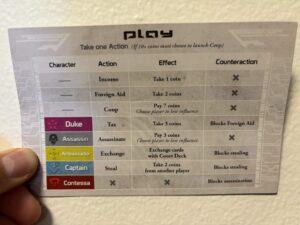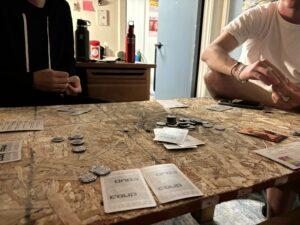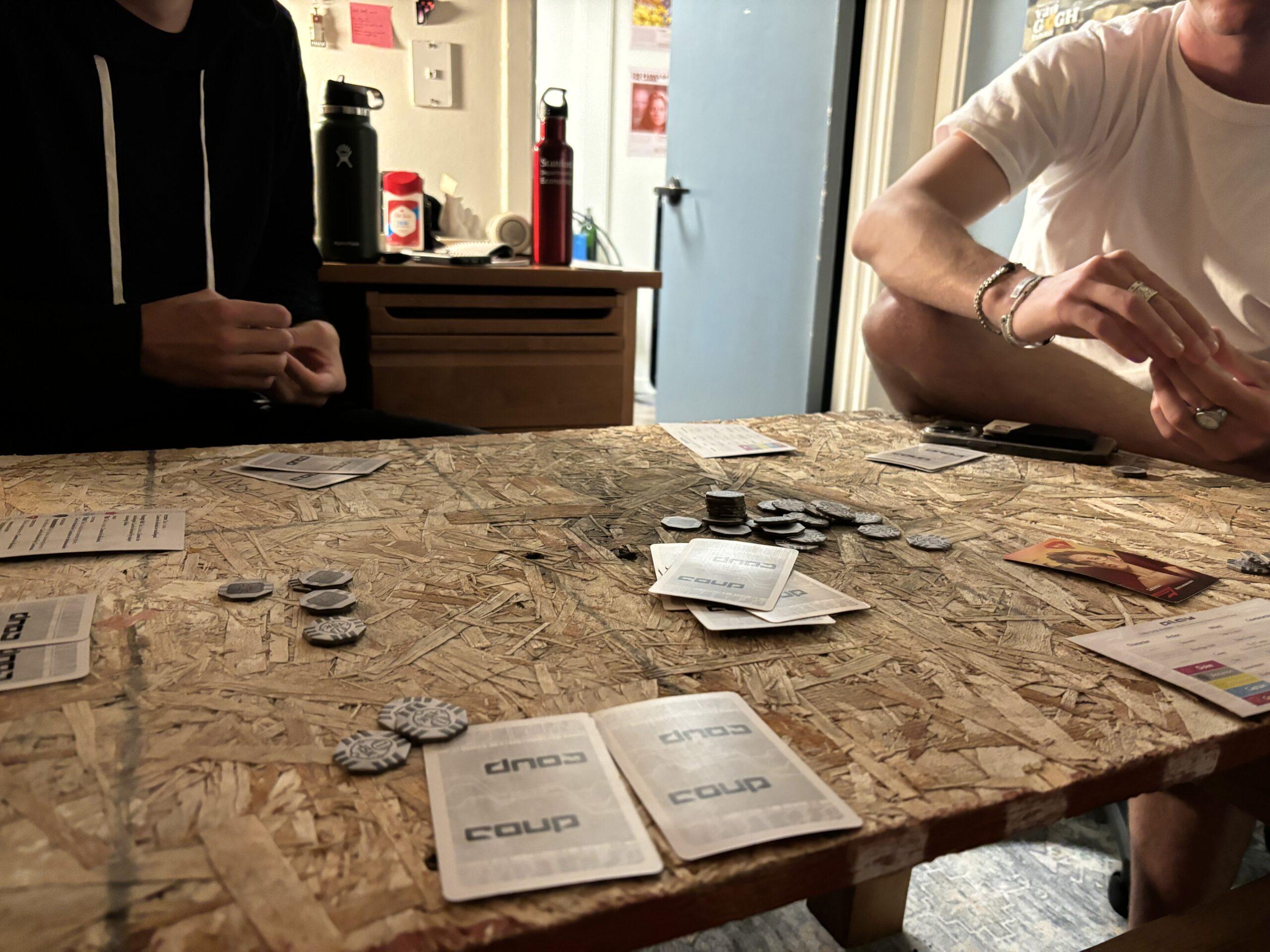Coup is a card game that can be played with three to six players. It is made for social situations and is targeted to groups of friends, young adults and older. It was designed by Rikka Tahta and published by Indie Boards & Cards and La Mame Games.
Using deception, incomplete information, cooperation, and communication, Coup creates a game environment unlike any other, causing “The Magic Circle” to not only encapsulate the mechanics and elements of the game but the personal dynamics of the players. A players’ cards and abilities constantly change and new information is revealed and hidden as the game goes on, it causes players to constantly change what they believe in order to predict the actions of the other players and make the move that puts them in the best position to win.
This game was one of the most fun games I have played. My friends and I sat down to play a game or two for my critical play and ended up playing for four hours on a night where we all needed to wake up early for class the next day. Its inherent social deduction nature allows for groups of people, especially groups of friends, to test the boundaries of the truth and bluff other players into believing that they have a certain card or not. At first, I thought that the loose nature of the game would prove to cause chaos, only to find out that it was what made the game truly unique. In other games like Secret Hitler and Mafia, there are really only two identities that a player can say they can or can’t have: being a part of the larger group or the smaller enemy group. In Coup, each player starts with two identity cards and there are four different identities that those can hold. And with the ability for those to dynamically change throughout the game, players must keep tabs on what they might think every other player has to protect themselves and give them the highest chance for success. Additionally, the fact that there are only three of each identity card introduces an element of statistics and probability into the game of bluffing as well. For instance, if a player is trying to claim that they have a certain card but another has two of that card, they would know that the probability of them also having that last one is far less, which could lead to a bluff call. This game has so many elements and strategies that continue to reveal themselves with each new round.
As aforementioned, one of the most fun elements of the game are the many different mechanics players can take. And because players can claim to have any of the identity cards, all actions are available throughout the game. The mechanics range from taking coins, stealing coins from other players, exchanging cards, assassinating and “coup”ing other players, and more. All of the potential actions for each card can be seen on the diagram that is included in the box below. One of the other strong mechanics is the ability to lie. Lie about what you have, what you saw put back in the deck, or your word that you won’t kill someone in exchange for them showing mercy on you. The possibilities are endless. In the same way, players can call other players out for lying, forcing them to lose a card if they’re caught in their bluff. But players can’t accuse all the time, as a false accusation leads to them losing a card, creating a very steep risk to reward ratio that must be considered. All of this leads to a number of aesthetics for the players. The idea of deception creates a poker-like feeling for players knowing they can put themselves at a huge advantage by getting a few bluffs through. And even though it is an individual game, alliances and teams begin to form, adding an aesthetic of trust and communication. Obviously, these all end at some point due to the nature of the game, leading to betrayal and dishonesty. This aesthetic in specific is why I believe the game is best suited for friend groups, as there are preexisting dynamics and known characteristics that can factor into the game. In this case, the “Magic Circle” is not just the cards on the table or the number of tokens a payer has — it truly expands to encapsulate the entire social dynamics of those playing.

Initially, the game seemed confusing and difficult, but that quickly changed for us after only one round. Soon after, we were running bluffs, predicting each others’ hands, and utilizing all the nuances of the game. One thing I noticed was the different play styles everyone had. For example, when it was time to Coup another player, some players used logic and eliminated a card from the player who was the biggest threat to them based on their position or their perceived holdings. Others would only attack players who attacked them in the previous turns, making it more personal and revenge based. All in all, such dynamics all went into creating the game atmosphere that led us to arguing, laughing, and saying “just one more game!” for four hours.





